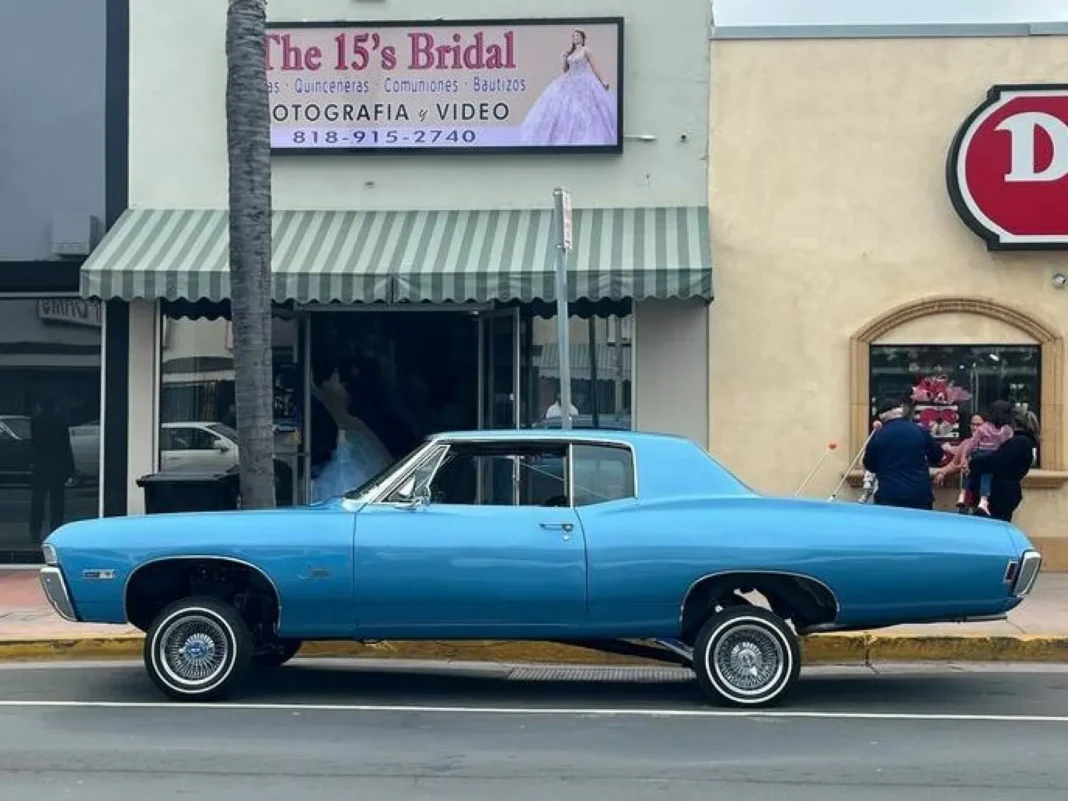In the sun-drenched streets of mid-20th-century Southern California, a unique art form rolled quietly into history. With gleaming chrome, vibrant custom paint jobs, and velvet interiors, lowrider cars weren’t just vehicles — they were mobile declarations of pride, creativity, and community. Cruising slow and steady, these cars transformed everyday boulevards into moving galleries, especially in Chicano neighborhoods where culture met craftsmanship.
From Chevrolet Impalas to Cadillac El Dorados, the lowriders of the 1950s and 60s were symbols of identity and resistance, tricked out with hydraulic systems that could lift and lower the car’s frame with the flick of a switch. But beneath the beauty of these cars lay a deeper story — one of discrimination, determination, and cultural pride.
From Criminalization to Celebration
Despite the artistic expression embodied in lowrider culture, mainstream society often misunderstood it. Laws and ordinances across California targeted the lowrider community under the pretext of maintaining public safety. In 1958, California’s Vehicle Code Section 24008 made it illegal to lower a car’s frame below the rims, a direct blow to the signature look of lowriders. Later, in 1988, the state passed legislation giving local governments power to ban cruising altogether, associating it with gang activity.
Yet, lowriders persisted. Through ingenuity and resilience, enthusiasts modified their cars to remain within legal limits, while still preserving the spirit of the culture. And with each new generation, the movement not only survived — it thrived, spreading its influence around the world.

Fast forward to 2023: California passed a new law effectively ending anti-cruising ordinances, a long-awaited victory for the community. Since January 1, 2024, lowriders have been cruising the streets once more, this time without the looming threat of fines or impoundment — a historic moment in reclaiming a tradition rooted in Mexican-American identity.
A Way of Life, Not Just a Pastime
For enthusiasts like Fernando Perez — known as “Birdman” — lowriding isn’t just about cars. It’s an extension of who he is. Perez’s 1966 marina blue Chevrolet Caprice isn’t just a car, it’s a piece of his heritage. “It’s what I know, it’s how I am,” he said. “The way I dress, the way I walk, the way I talk, the way I look.”
That sentiment echoes through the words of Cesar Ibarra, another passionate lowrider: “It’s not a hobby for me. It’s my lifestyle. I grew up into this.” Ibarra, now a father, is passing that legacy to his children. His youngest daughter is already searching for a car of her own to continue the tradition. And like Perez, Ibarra built a lowrider bike for his son — a miniature homage to a culture that continues to evolve.
This familial aspect is at the heart of lowrider life. Cruise nights in places like San Fernando are more than car shows; they’re intergenerational gatherings where families connect over shared values and aesthetics.
Pride in the Ride
Denise Sandoval, a professor of Chicana and Chicano Studies at California State University, Northridge, sees lowriding as a powerful form of cultural expression. “It’s multigenerational,” she notes, “creating space for family to celebrate community, to celebrate culture, to celebrate cultural pride — pride of being Chicano.”
Sandoval traces the roots of lowriding to the 1940s, when Mexican-American communities were marginalized by segregation and systemic racism. In a society that sought to silence them, these communities responded with creative assertion. Lowriders became moving symbols of defiance, dignity, and pride.
“It’s how working-class communities have carved out their own space,” Sandoval explains. “It’s a statement about how they want to be seen and remembered.”
Riding Into the Future
As with many cultural traditions, the biggest threat to lowriding today is economic, not legal. Customizing and maintaining classic cars has become prohibitively expensive — some models now fetch upwards of $30,000, excluding restoration costs. The rise in cost has made it harder for young people to step into the culture the way their parents or grandparents once did.
But the community’s response, true to its resilient spirit, has been adaptive. A new generation is embracing lowrider bicycles — smaller, more affordable versions of the iconic cars, complete with dazzling paint jobs, chrome accessories, and hydraulic-style details. These bikes serve as a gateway, helping youth stay connected to their roots without the financial burden of owning a car.
Clubs for young boys and girls are popping up across the state, bringing children into the fold and giving them the opportunity to express themselves through customization and community involvement. In doing so, they’re helping preserve a culture that refuses to be sidelined.
Final Thoughts
Lowriding is more than just a Southern California phenomenon — it’s a living tradition of cultural pride and community connection. With laws now changing in its favor and younger generations carrying the torch in creative new ways, the future of lowrider culture seems as vibrant as the cars themselves.
As the engines hum low and the chrome gleams in the sunset, lowriders continue to cruise — not just as symbols of resistance, but as moving testaments to history, heritage, and hope.




